I can show you how a company thinks.
Oliviero Toscani followed in his father’s footsteps and become a photographer. He obtained a diploma at the Kunstgewerbeschule Zürich> he went onto work with several high-profile fashion magazines, including Elle, Vogue, L’Uomo Vogue and Harper’s Bazaar.
In 1982 he became an Art Director for the Benetton Group and a year later, under his guidance, they launched a series of ads that were designed to be explicit celebrations of diversity and inclusivity. The “All the Colors of the World” campaign, promoted global harmony and featured young people of different nationalities and cultures dressed in bright colourful Benneton clothing.
However, in the early 1990s things would change for the campaign, for the brand and for Toscani.
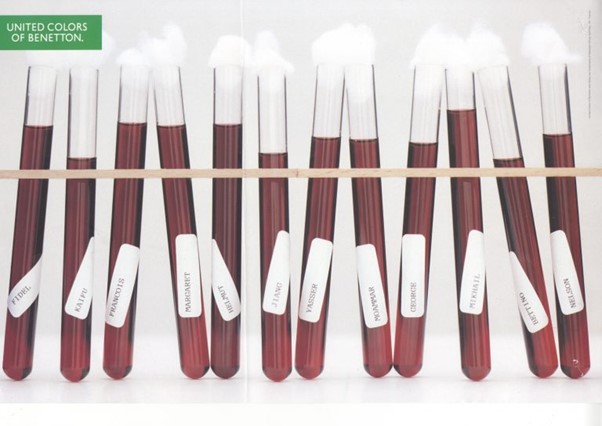
In the first ad that signalled the changes that were coming, the line-up of teenagers was replaced by a line-up of test tubes… all filled with blood. Each vial was labelled with a different first name. The global inclusivity theme remained, as the names were ethnically diverse – Fidel, Kaifu, Helmut, Jiang, George, and Mikhail.
Future ads would continue to promote inclusivity, the imagery took a dramatic turn. Ads would feature a new-born baby still attached to an umbilical cord, a priest and a nun kissing, a man with AIDS lying on his deathbed, surrounded by his family, three raw hearts, with the words “white”, “black” and “yellow” written on each and a white woman, black woman and Asian baby wrapped up together in a blanket.
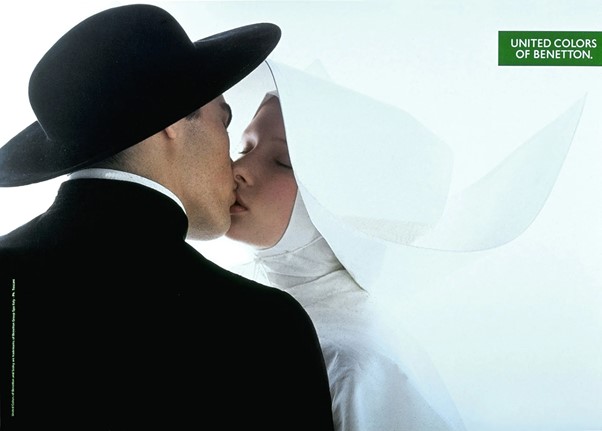
Explaining the move, Toscani would tell the New York Times: “I have found out that advertising is the richest and most powerful medium existing today, so I feel responsible to do more than to say, ‘Our sweater is pretty.’
The new style was divisive, people either loved it or hated it but few could ignore it. It made Benetton top-of-mind, but some questioned the tactics Toscani used; “was a fashion billboard the right place to present this type of controversial image?”
His reply: “Why would you want to see clothes in an advert? If you want to see the clothes, you can see them in our shops. On a billboard, I can show you how the company thinks, what it believes, what it represents. Advertising is primitive and powerful – it is more than art. People can look up and see it. And if they don’t like it, they don’t have to look at it.”
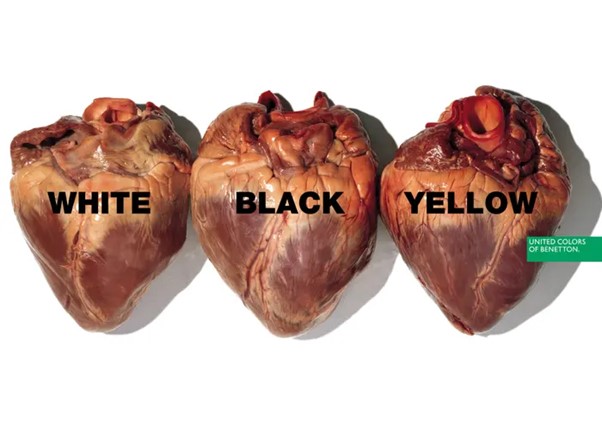
While sparking almost constant controversary in some country around the world, the company stood behind their principles, and their man. That was until the company faced a huge backlash in the USA following on from a campaign known as ‘We on Death Row’.
At first the company said the photographs “aim at giving back a human face to the prisoners on death row” but as more and more US states condemned the campaign and retail chains Sears and Roebuck & Co refused to sell Benetton products following protests from victims’ rights groups, something had to be done. Under the threat of boycotts and with sales falling, they parted company with Toscani.
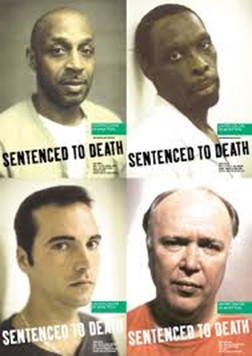
Subsequently, the state of Missouri filed a lawsuit against Benetton over the campaign, alleging that Benetton had made false claims to state officials in gaining access to the prison and misrepresented the purpose of the interview. The case was settled out of court with Benetton, a formal apology from Benetton, an undertaking to send letters of apology to the families of the murder victims and commitment to a substantial charitable donation.
Many say he was sacked as a consequence, but Toscani denies this, standing by the brand. He says, “I left because Tina Brown asked me to work with her on Talk magazine, but the press wanted another reason because no one could believe that I wanted to leave Benetton at the height of my career. I have no regrets about those pictures – they were fantastic.”
And his loyalty and the success he had had, eventually led to his return in 2017. The first campaign on his second era featured his previous trademark of a diverse cast of models. It was more upbeat, and more product led. It showed them smiling and holding bunches of flowers, wearing T-shirts emblazoned with phrases like “gender-free zone” and “colours don’t have gender”. Toscani described the images as being “about integration, humanity and the end of discrimination.” Still reflecting the brand’s core belief in inclusivity.
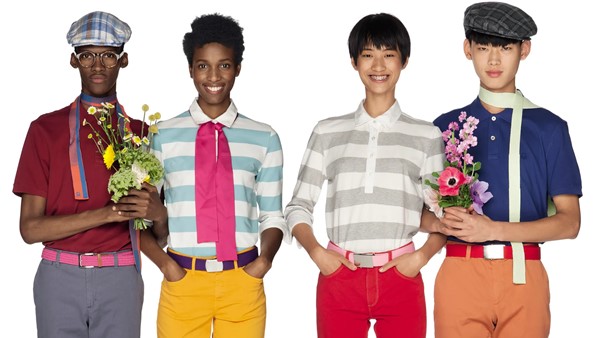
It wasn’t long though, before he returned to ‘shock-vertising’, repurposing two photographs from 2018 migrant rescue operations by the Franco-German charity SOS Méditerranée for an advertising campaign.
However, his second stint was to be shorter and less successful.
He was sacked over comments he made about the collapse of the Morandi Bridge in Genoa, Italy, that killed 43 people. During a radio interview, he said, “Who cares that a bridge collapsed?” and “This story doesn’t interest me.”
Two days later, an unusually contrite Toscani apologised on Twitter saying that his comments “had been taken out of context” and in an interview on another radio programme he said that he was “destroyed and truly sorry.”
It was too much for Benetton, who fired him. They released a statement in which they said that Benetton “completely disassociates itself from Mr. Toscani’s remarks,” and were “renewing their sincere closeness to the families of the victims and to all those who have been involved in this terrible tragedy.” They went onto acknowledge “the impossibility of continuing the professional relationship with its creative director.”
It is a sad end for someone who inspired and still inspired many with his view that “Creativity is not based on security. Once you’re secure, you’re doing something that’s already been done.”
And the moral is, if a brand has a purpose it should be willing to stand up and champion it even if it can be divisive. What should and would your brand campaign for?
FOOTNOTE: In no way, condoning Toscani’s shameful comments about the bridge disaster, it is perhaps still interesting to consider that, at a time when brands are increasingly wanting to stand for something and to have a purpose beyond just making profit, that Toscani, and the Benetton campaign he created, remain a benchmark about how a brand can adopt unconventional and controversial approaches to advertising as a way that not only connects with a younger generation but brings awareness to societal and environmental issues.